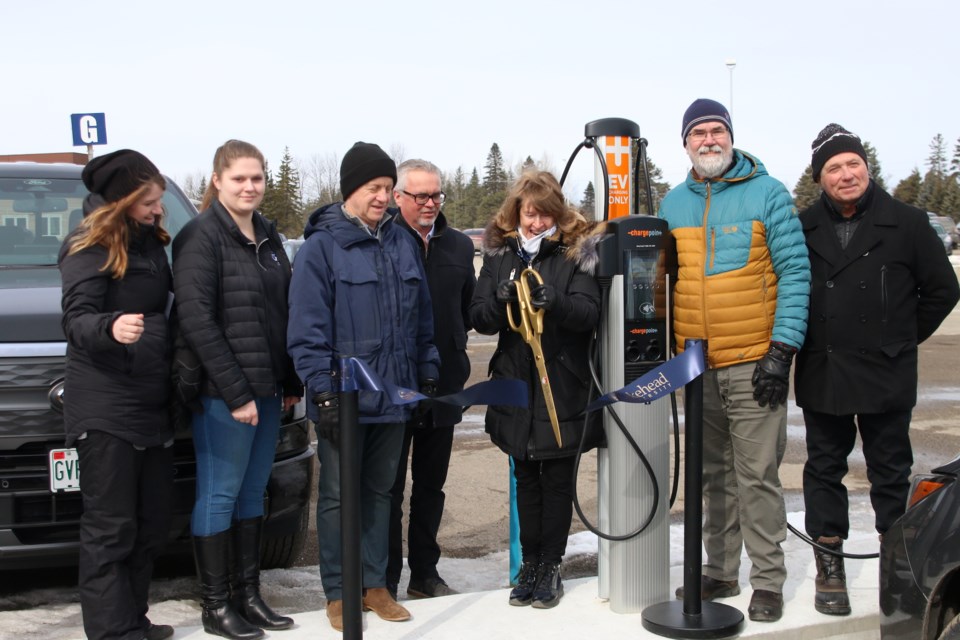THUNDER BAY — As more people make the switch to electric vehicles, organizations and businesses are stepping up by providing more places to charge up.
On Friday, Lakehead University officially unveiled a new set of charging stations on its Thunder Bay campus.
“For people who live in apartment buildings and have no charger ability, this is amazing,” said Ken Shields, an organizer with Electric Vehicle Association of Northern Ontario. “This would be a game changer for people like that.”
With the help of the Community Economic Development Commission, Lakehead installed eight level 2 ChargePoint chargers with 16 vehicle connectors.
The move was part of the Year of Climate Action in 2021 and 2022 and Lakehead’s sustainable building policy.
Devon Lee, acting sustainability coordinator at Lakehead University, said the chargers have been in place and active for several weeks but they wanted to officially share their arrival with the community at large with a ribbon cutting ceremony.
“It is a big step in our transition towards de-carbonized transit and commuting to campus,” she said. “We also want the community to know that we have the chargers. We expect people in Thunder Bay and beyond, people travelling across Canada, can come here to charge.”
Existing infrastructure for plugging in block-heaters throughout the Lakehead parking lots was used to install and power the chargers.
The charges are open to the public, but Lakehead does have parking regulations in place and a parking pass is required.
Lee said the university will monitor the charging station usage and develop and evolve plans and policies involving their use.
“We know here in Thunder Bay being a remote location, being on the Trans-Canada Highway, we have a different frame work here and a different community, so we want to learn what will work in our community. We are taking a bit of time and seeing what the uptake is, how long are people coming, do we think people are coming back or just driving by,” Lee said.
“As we learn more about how users are taking advantage of this space, we will put in place a long-term program. But we expect that will continue to change.”
And while some may believe electric vehicles are not practical in a region like Northern Ontario, Shields said the technology and infrastructure has come a long way in the last 10 years.
According to Shields, he can travel with his Tesla as far as Nipigon, Upsala, or across the border on a single charge. The car can then recharge in the time it takes to sit down for a quick meal while on the road.
“In the winter time, I alluded that it takes more energy to get a car from A to B,” Shields said. “The chargers we have on the way to Dryden and back are adequate. Currently, when I go to the chargers, they are not busy. But there are a lot of people here today who have ordered cars but can’t get them.”
As public policy shifts away from gasoline driven cars to address climate change, more people will be turning to electric vehicles, which is why stations like the one at Lakehead will likely become much more common.
“We are going to need more charging stations like this,” Shields said.
